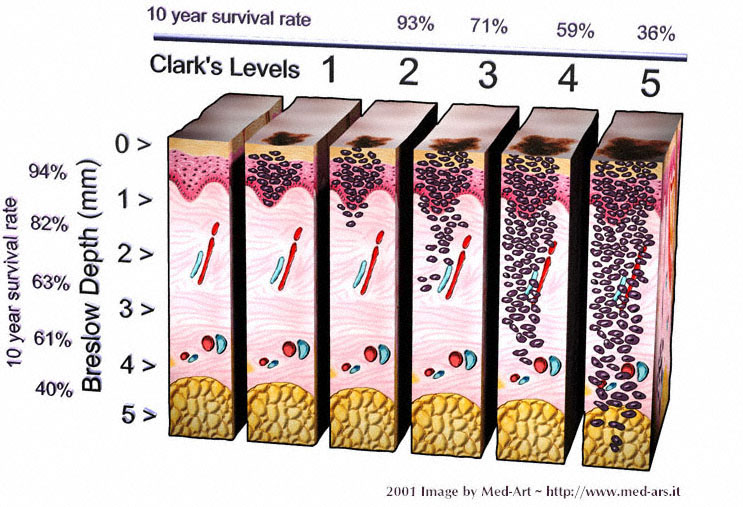Clark’s staging system is a method used to assess the extent of invasion of melanoma, a type of skin cancer. This system was developed by the pathologist Wallace H. Clark in 1969 and is based on the microscopic analysis of melanoma in order to determine the extent of invasion in the different skin structures.

The Clark staging system classifies melanoma into five levels, referred to as Clark levels I, II, III, IV and V. Each level represents a different degree of invasion into the skin tissue. Here is a brief description of each level:
Clark level I: Melanoma is confined to the upper part of the epidermis, called the basal layer. It does not invade the dermis, the deepest layer of the skin.
Clark level II: Melanoma invades the basal layer of the epidermis and extends slightly into the papillary dermis, the layer immediately beneath the epidermis.
Clark level III: Melanoma invades the basal layer of the epidermis and extends deeper into the papillary dermis than level II.
Clark level IV: Melanoma invades the reticular dermis, the deepest layer of the dermis.
Clark level V: Melanoma invades subcutaneous tissue beyond the reticular dermis.
Note that Clark’s staging system has been largely replaced by more modern staging systems, such as the tumor-node-metastases (TNM) staging system, which provide more detailed information about the stage and characteristics of melanoma. However, Clark’s level may still be mentioned in some research or clinical contexts for historical reference.